- Home
- Terry Pratchett
Turtle Recall: The Discworld Companion ... So Far Page 48
Turtle Recall: The Discworld Companion ... So Far Read online
Page 48
Once accepted, the student may study for any one of the University’s degrees:
Bachelor of Thaumatology (B.Thau.)
Bachelor of Magic (B.Mgc)
Bachelor of Sortilège (B.S.)
Bachelor of Magianism (B.Mn.)
Bachelor of Divination (B.D.)
Bachelor of Civil Lore (B.C.L.)
Bachelor of Applied Theurgy (B.Ap.Th.)
Bachelor of Impractical Necromancy (B.Im.N.)
Bachelor of Fluencing (B.F.)16
Bachelor of Amulets & Talismen (B.Am.Ta.)
Bachelor of Cabbalistic Rites (B.C.R.)
Bachelor of Hyperphysical Chiromancy (B.H.Ch.)
Bachelor of Esoteric Occultism (B.Es.O.)
Bachelor of Eldritch Lacemaking (B.El.L.)17
Master of Thaumatology (M.Thau.)
Master of Magic (M.M.)
Master of Sortilège (M.S.)
Master of Magianism (M.Mn.)
Master of Divination (M.D.)
Master of Civil Lore (M.C.L.)
Doctor of Thaumatology (D.Thau.)
Doctor of Magic (D.M.)
Doctor of Sortilège (D.S.)
Doctor of Magianism (D.Mn.)
Doctor of Gramarye (D.G.)
Doctor of Divination (D.D.)
Doctor of Civil Lore (D.C.L.)
Doctor of Magical Philosophy (D.M.Phil.)
Doctor of Morbid Spellbinding (D.M.S.)
Doctor of Condensed Metaphysics (D.C.M.)
Doctor of Wizardry (D.W.)
In addition to the above, the University also tolerates guest lecturers on ‘fringe’ aspects of magic (at least, fringe from the point of view of established wizardry) such as shamanism, witchcraft, voodoo and plumbing.
Progression through the eight levels of wizardry is determined in part by the acquisition of degree qualifications and, particularly towards the top of the tree where the number of available places become few and far between (there are only eight eighth-level wizards, at least officially), by a policy of ‘dead men’s pointy boots’, no questions being asked about the manner of their emptying.
Unseen University Doctor’s gown and sash
(We suppose at this point that it must be admitted, with extreme reluctance, that the formal level is not necessarily an indication of a wizard’s actual power. Like the whole structure of UU, the levels and degree system is there to control the power of wizardry rather than further it. It has to be pointed out, for example, that by the University’s own rules the wizard RINCEWIND, having defeated a sourcerer (in Sourcery), is therefore at the very least an eighth-level wizard. No one at UU seems to have worked this out, and it is just as well for their temper that this remains the case.)
Many of the faculties also support a sponsored Professorship, which, although carrying a sturdy stipend, also carries with it the stigma of actually being expected to teach the students. The current Professorships are:
Egregious Professor of Cruel and Unusual Geography
Egregious Professor of Grammar and Usage
Professor of Recondite Architecture & Origami Map-Folding
Patricius Professor of Magic
Magus Professor of Wizardry
Invisus Professor of Condensed Metaphysics
Octavus Professor of Civil Lore
Haudmeritus Professor of Divination
Superbus Professor of Astrology
Infandus Professor of Morbid Spellbinding
Fluxus Professor of Sortilège
Professor of Recondite Phenomena
Professor of Logic
Professor of Illiberal Studies
STAFF
Identified members of the University’s staff include:
Archchancellor
Bursar
Chair of Indefinite Studies
Dean of College
Dean of Liberal Studies
Dean of Pentacles
Lecturer in Applied Astrology
Lecturer in Recent Runes
Lecturer in Vindictive Astronomy
Lecturer in Creative Uncertainty
Librarian
Professor of Anthropics
Professor of Astrology
Reader in Esoteric Studies (also known as ‘the Reader in the Lavatory’)
Reader in Invisible Writings
Reader in Woolly Thinking
Senior Wrangler
Praelector
Again, the fact is that a university that has existed for two thousand years, and is as rambling as UU, develops all sorts of quirks. There are professors in distant parts of the building engaged in their own pursuits and hardly ever seen; there are lecturers who don’t lecture, and research students who are older than most of the faculty. Mustrum RIDCULLY, Archchancellor at the time of writing, is resigned to the fact that there are plenty of wizards in outlying areas of UU who don’t even know who he is. Once in UU, a wizard need never leave. Tenure is automatic. There is always a spare study somewhere, always room in the Great Hall. It is, in short, academic heaven – and a perfect way to ensure that the most potentially dangerous men on the Disc spend their time squabbling amongst themselves and, of course, eating big dinners.
TERMS
The University year is split into eight terms, each of which is approximately one week long in order to minimise the amount of time that the faculty needs to spend in any room with the student body.
The students, however, continue to live in the University throughout much of the calendar year, undertaking their own research and generally absorbing magic from the fabric of the building and adding to its storehouse of knowledge. (The theory runs thusly: it is very well known that students arriving fresh at any university know all there is to know about absolutely everything. But when they leave, after many years of study, they’re usually only too ready to admit that there is a lot they don’t know. Raw knowledge must therefore have been passing from the students into the University, where it accumulates.)
The University terms follow the Great or true astronomical Disc year, despite the fact that most of the world lives by the ‘agricultural’ year (see CALENDARS). All really old and important universities have terms linked to some temporal scheme now quite opaque to the mass of the population, to show them what they’re missing by being so stupid.
The UU terms are: Octinity; Rotation; Backspindle; Hogswatch; Evelyn; Micklemote; Candlerent (Candlerent is rent from a house which continually deteriorates – this presumably has something to do with the Shades, where many of the buildings have deteriorated to the point at which flat ground would be urban improvement); Soul Cakes.
CEREMONIES AND FESTIVALS
The Convivium.
The UU degree ceremony. The University’s Archchancellor, Council, eighth-level wizards, doctors and masters process through the city from the University to the opera house, led by (traditionally) the Commander of the City Watch or, in those recent years when there has been no Commander, by a man carrying a cushion on which is a small pot of mustard and a quill pen (because of Tradition). The procession is extremely colourful and popular and has put at least one nautical observer in mind of an entire fleet of galleons running in front of the wind.
In the opera house, new graduates are awarded their degrees in the presence of the PATRICIAN. After the ceremony, the procession proceeds rather more quickly back to the University for a large meal.
Until two hundred years ago the Convivium was held within the University grounds; it appears to have been moved outside as an exercise in impressing the masses; a very similar exercise, in fact, to the Moscow May Day parades in the great days of Soviet power. Look at us, the wizards seem to be saying as they proceed with robes astream – we’ve all got big staffs, and they’ve all got knobs on the end. We don’t want to have to use them.
Gaudy Night.
When graduate wizards attend a grand banquet in the Great Hall, with each wizard making a greater effort than usual to outdo his fellows in the splendour of his robes. The winner is carried shou
lder-high out of the University and thrown on to the Ankh.
Boy Archchancellor.
This ceremony occurs around the turn of the year, at Hogswatch. A first-year student is selected to be Archchancellor for a whole day, from dawn until dusk. For that period he can exert the full power of the Archchancellorship and there are many tales of japes played on senior members of the College Council (hence the expression ‘a wizard wheeze’). For this reason the student selected for this honour is usually the most unpopular boy in the University, and his life expectancy the following day is brief.
Head of the River.
Like all riverside universities, Unseen is keen to promote its water sports. Because of the nature of the Ankh, rowing is tricky except in times of serious flood, and races consist of teams of eight student wizards chasing each other on foot up the Ankh while carrying a racing skiff (a similar practice, for different reasons, is found in the Alice Springs Regatta in Australia, which takes place on the dry river bed).
The race itself is known as the Bumps, because of the nature of the surface of the Ankh. The competing crews race from the University boathouses to the Brass Bridge. The winning crew is then awarded a ‘brown’ (pairs of brown pointy boots to replace the ones destroyed by close contact with the Ankh during the race), and becomes Head of the River, an earthy reference to the state of the members’ boots and clothing.
May Morning.
Every Mayday morning at dawn, the UU choir sing an anthem from the top of the Tower of Art, while the faculty and students (or as many of them as are awake at dawn) stand in the University gardens and listen. Since the Tower is 800 feet high, the listeners cannot hear the singing but, since the anthem takes five minutes to sing, they all applaud five minutes after dawn.
On a number of occasions the choir itself has failed to get up in time but the ‘listeners’ still clap anyway. To sneer at this is to misunderstand the Value of Tradition. If you don’t understand this, you are nothing but a foreigner.
The Wizards’ Excuse Me.
Quite a new function, held on the last day of Backspindle term. It has been said that wizards don’t have balls, but the Excuse Me belies this. It is a large dance to which the cream of Ankh-Morpork society (or, as they say, at least the stuff which is floating on the top) is invited. There are two bands and, most importantly, a buffet with eighteen different kinds of meat and, of course, cheese cubes and pineapple lumps on a stick.
The Excuse Me is particularly favoured by the current LIBRARIAN, as a result of which sales of hair oil soar in the preceding week. He is the only person in Ankh-Morpork who can achieve a parting down his entire body.
Rag Week.
The entire Backspindle term. Wise citizens know enough to be on their guard around this time. The Week has all the normal perils of student humour with the additional seasoning of magic; these are viewed by the University authorities with the amused acceptance that is generally employed vis à vis student activities when baton rounds and tear gas have been found ineffective.
Citizens may encounter, for example, the Short Street Climb, in which wizards armed with crampons and pitons and ropes ‘climb’, in all seriousness, the length of the street. Many lose their grip and plunge helplessly through the door of the Mended DRUM where, in an attempt to revive themselves, much alcohol is consumed.
Another regular feature is the ‘borrowing’ of certain civic items and taking them to the Mended Drum, where much alcohol is consumed. Such items typically include street signs, potted plants and, on one occasion, the Brass Bridge.
Top of the Tower of Art
An event often featured in the Week, but liable to break out at any other time, is ‘tobogganing’. Traditionally, this took place inside the Tower of Art, when students on tea trays – after consuming much alcohol – would slide down the 8,888 steps on the spiral staircase, with many death-defying plunges over the missing ones. By the time they were halfway down, in any case, centrifugal force was pinning them to the walls, and wizards often shot from the doorway at the bottom with enough speed to skim them across the Ankh.
These days Rag Week is more normally held inside the University buildings themselves, where the many curving staircases and polished corridors offer endless opportunity for impressively sudden death.
Beating the Bounds.
(Also known as ‘Plunkers’.) At dawn on 22 Grune the entire faculty, led by the choir and with the student body trailing behind, walk the ancient boundaries of the University (approximately the Backs, the Maul, Esoteric Street and the river frontage). They walk through or if necessary climb over any buildings that have since been built on the line of progress, while ceremonially striking any members of the public with live ferrets (in memory of Archchancellor Buckleby). Any red-headed men encountered are seized by several strong young wizards and given ‘a plunking’; this tradition has, most unusually – and subsequent to an incident that left three wizards hanging precariously from a nearby gutter – been amended to read ‘any red-haired men except of course for Captain CARROT Ironfoundersson of the Watch’. After the progress, the entire membership of the University heads back to the Great Hall for a huge breakfast at which duck must be served.
Scrawn Money.
(‘Archchancellor Scrawn’s Bequest’.) One of the oldest ceremonies in the University calendar, held in Sator Square. All tenants of University property are required to attend, whereupon they are given two pennies, a pair of long socks and a loaf of bread baked the previous morning. They then file into the University where they are allowed to watch the wizards having lunch.
The Poor Scholars.
When UU was first established, a class of students was accepted without the benefit of financial backing or formal seconding by a University graduate. These were the ‘Poor Scholars’, young men with magical potential. It was felt that it would be in the interests of all concerned if the young men were educated in the ways of UU (in the words of Alberto Malich, the founder: ‘We’d better keep the bright young buggers where we can see ’em’).
They were not given rooms in the Tower of Art, and many had to live in lean-tos constructed against the walls. Once a month, in recognition of these stoics’ determination not to be put off from their studies, the faculty would appear at the upper windows of the Tower and throw food to the ‘Poor Scholars’. It was a popular event among the staff because it was quite possible to achieve a knockout blow with a well-gnawed cutlet from 200 feet.
This tradition lives on, even though the University is now physically much bigger and takes no ‘Poor Scholars’. Once a year, the entire student body forgathers in Sator Square, where the faculty pelts them with stale bread rolls. Thrown with some force.
’Sity and Guilds.
When the Guilds began to set up their own academic establishments there was a lot of rivalry between their various students, and lone UU students would frequently be set on by gangs from colleges. Ankh-Morpork has a relaxed attitude to sudden death, and many faculty members prefer dead students as being easier to teach, but the more pragmatic Guild Presidents, and the then current Archchancellor, decided that enough was enough because all those bodies around the place made it hard to open doors, and so on.
They decided to channel the rivalry into an annual sporting contest, to be called the ’Sity and Guilds Match (although A. J. Loop, in the Ankh-Morpork Almanack and Book of Dayes, claims that this was merely a slightly modernised form of a much older and rather sinister contest known as the Ankh-Morpork Poor Boys’ Fun, which involved teams of up to five hundred; certainly the old Laws and Ordinances of Ankh-Morpork contain several prohibitions mentioning the term).
The principle was to kick or carry a football from the outskirts of the Shades (the oldest part of the city) to the Tower of Art (the oldest building on the Disc). The game involved teams of fifty students from each of the principal Guilds, plus UU. Goals were scored by kicking the ball through the door (or, more often, the window) of landmarks along the way, many of them having names
like the Mended Drum, Bunch of Grapes, etc. The scoring team had then to be bought drinks by the other teams. After a few years, the Archchancellor ruled that only one goal could be scored in each pub since the match had, three years running, gone on for a month.
UU records suggest that students from the University have not participated recently, but street football with various rules is still an Ankh-Morpork tradition. (In troll areas of the city the troll version of football is still occasionally played, although out of deference to modern sensibilities the ‘football’ of choice is no longer a human head, and a dwarf is substituted.)
UNSEEN UNIVERSITY: A GUIDED TOUR
The University’s main gates open on to Sator Square. They are big and plated with solid OCTIRON. There is no doorknocker, and at sunset each day the gates are locked by magic (in actual fact by MODO, the University’s dwarf gardener, but it pays to advertise).
Take a moment to inspect the interesting frontage, which is an amazing juxtaposition of architectural styles, although it may be that the word ‘confectionery’ is more appropriate. From various niches the statues of former Archchancellors, of which UU has a more than adequate supply, stare down over the city.
We may at this point draw the attention of gentlemen in the party to the statue of Archchancellor Bewdley, just over to the window to the right of the gates. If they are in a position to do so (i.e., alive), Archchancellors like to influence the style of their commemorative statues; Archchancellor Bewdley always disliked Ankh-Morpork intensely and I think you will agree, when you notice the position of his hands, that this is abundantly clear posthumously.

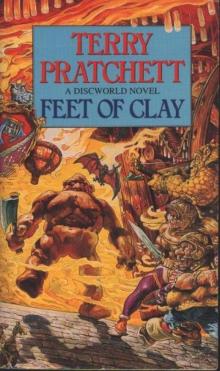 Feet of Clay
Feet of Clay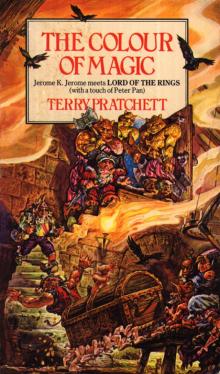 The Color of Magic
The Color of Magic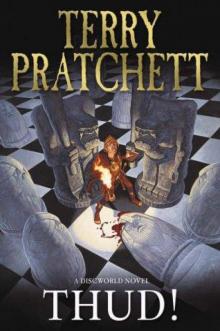 Thud!
Thud!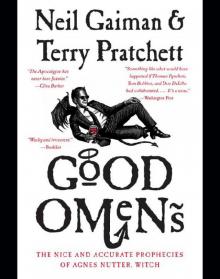 Good Omens: The Nice and Accurate Prophecies of Agnes Nutter, Witch
Good Omens: The Nice and Accurate Prophecies of Agnes Nutter, Witch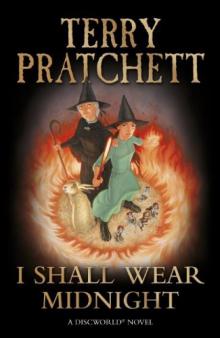 I Shall Wear Midnight
I Shall Wear Midnight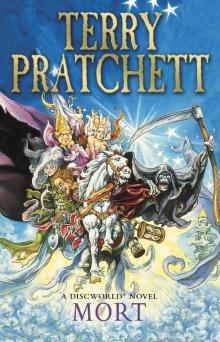 Mort
Mort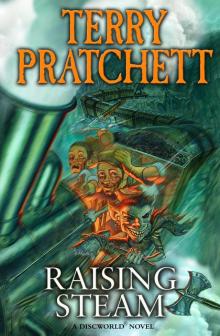 Raising Steam
Raising Steam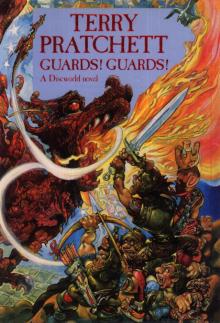 Guards! Guards!
Guards! Guards!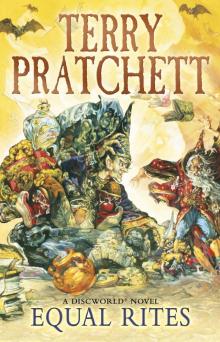 Equal Rites
Equal Rites A Hat Full of Sky
A Hat Full of Sky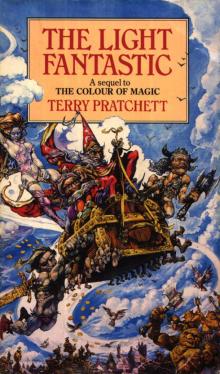 The Light Fantastic
The Light Fantastic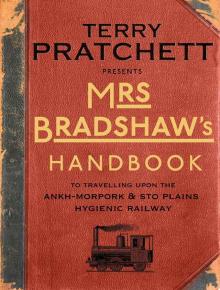 Mrs Bradshaw's Handbook
Mrs Bradshaw's Handbook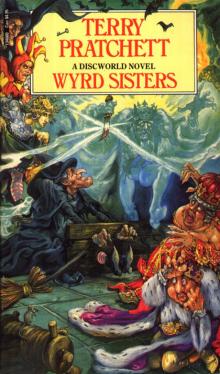 Wyrd Sisters
Wyrd Sisters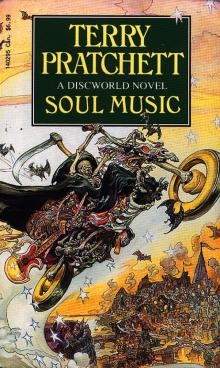 Soul Music
Soul Music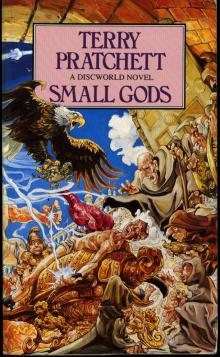 Small Gods
Small Gods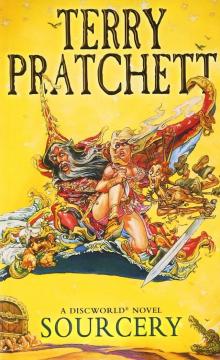 Sourcery
Sourcery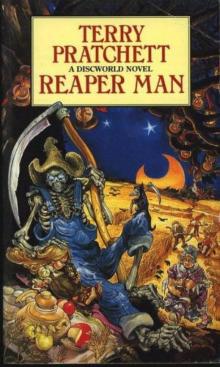 Reaper Man
Reaper Man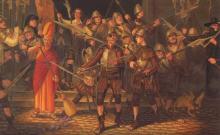 Night Watch
Night Watch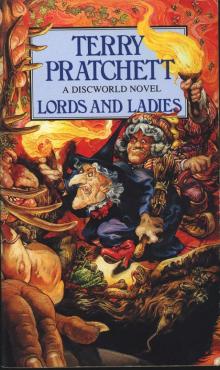 Lords and Ladies
Lords and Ladies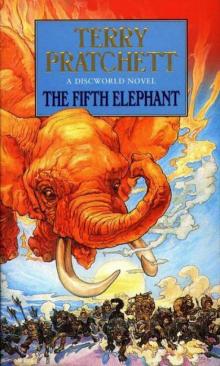 The Fifth Elephant
The Fifth Elephant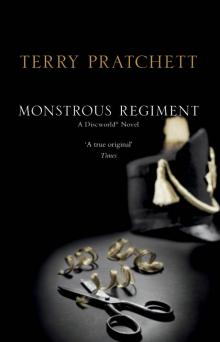 Monstrous Regiment
Monstrous Regiment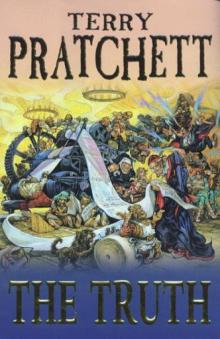 The Truth
The Truth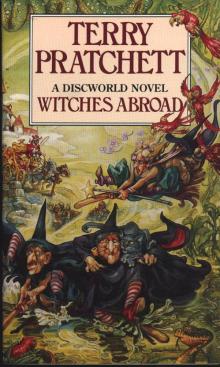 Witches Abroad
Witches Abroad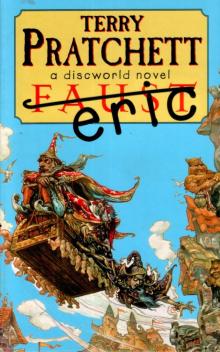 Eric
Eric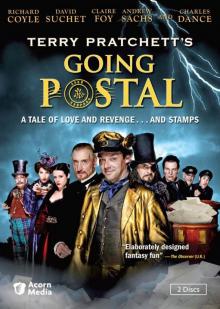 Going Postal
Going Postal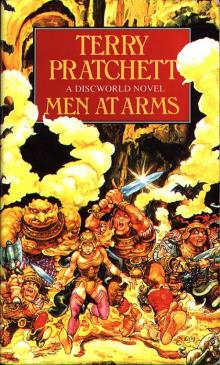 Men at Arms
Men at Arms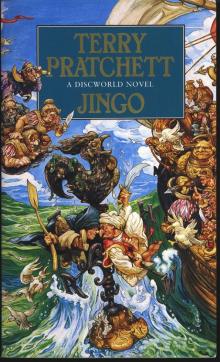 Jingo
Jingo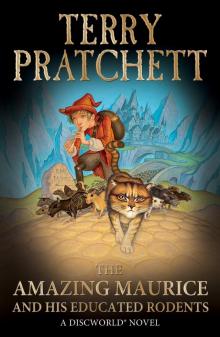 The Amazing Maurice and His Educated Rodents
The Amazing Maurice and His Educated Rodents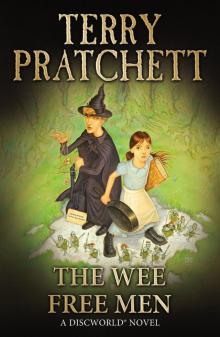 The Wee Free Men
The Wee Free Men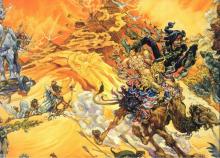 Pyramids
Pyramids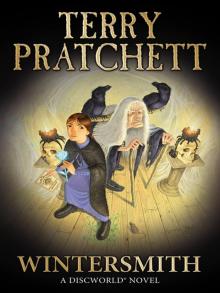 Wintersmith
Wintersmith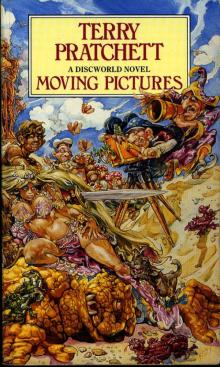 Moving Pictures
Moving Pictures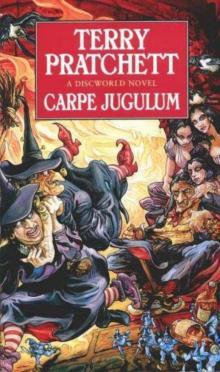 Carpe Jugulum
Carpe Jugulum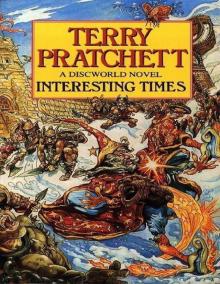 Interesting Times
Interesting Times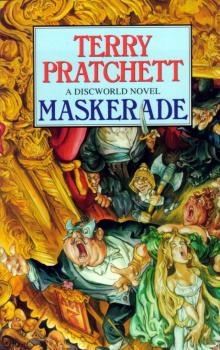 Maskerade
Maskerade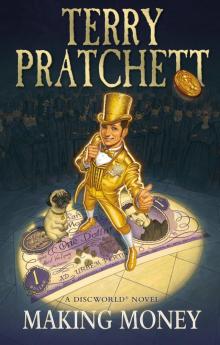 Making Money
Making Money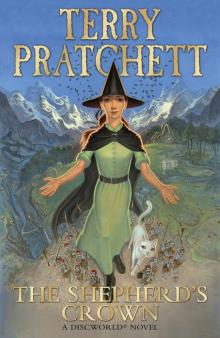 The Shepherd's Crown
The Shepherd's Crown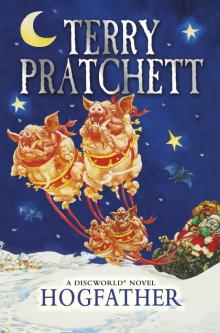 Hogfather
Hogfather Troll Bridge
Troll Bridge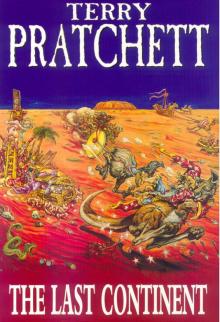 The Last Continent
The Last Continent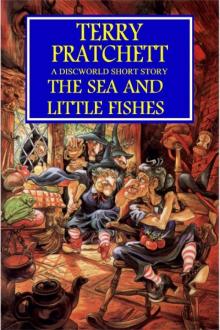 The Sea and Little Fishes
The Sea and Little Fishes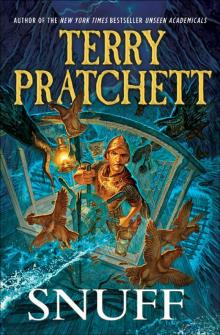 Snuff
Snuff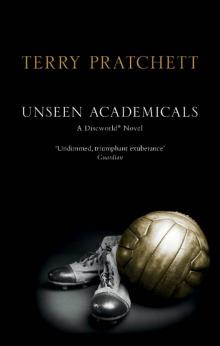 Unseen Academicals
Unseen Academicals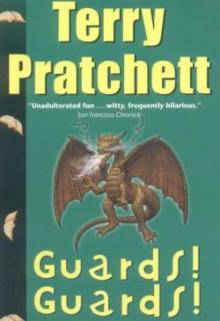 Guards! Guards! tds-8
Guards! Guards! tds-8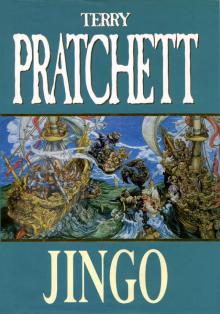 Jingo d-21
Jingo d-21 Turtle Recall: The Discworld Companion ... So Far
Turtle Recall: The Discworld Companion ... So Far The Fifth Elephant d-24
The Fifth Elephant d-24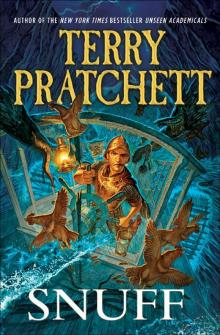 Discworld 39 - Snuff
Discworld 39 - Snuff The Long War
The Long War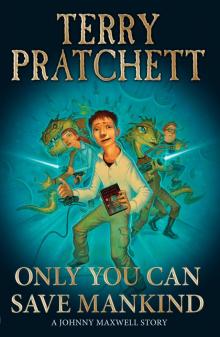 Only You Can Save Mankind
Only You Can Save Mankind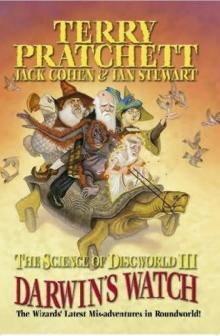 The Science of Discworld III - Darwin's Watch tsod-3
The Science of Discworld III - Darwin's Watch tsod-3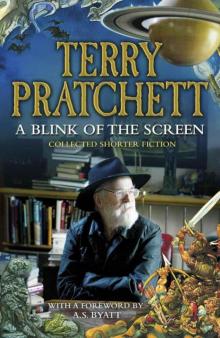 A Blink of the Screen: Collected Short Fiction
A Blink of the Screen: Collected Short Fiction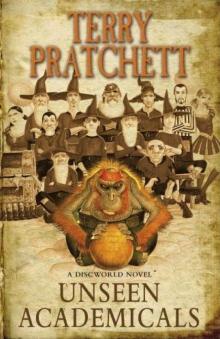 Unseen Academicals d-37
Unseen Academicals d-37 Wings
Wings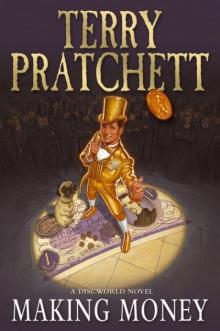 Making Money d-36
Making Money d-36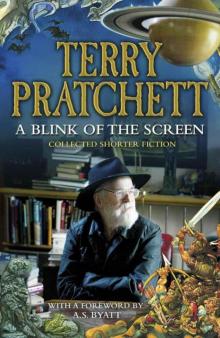 A Blink of the Screen
A Blink of the Screen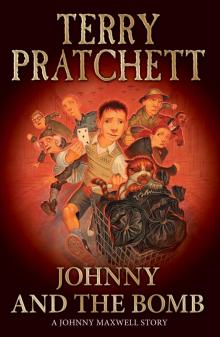 Johnny and the Bomb
Johnny and the Bomb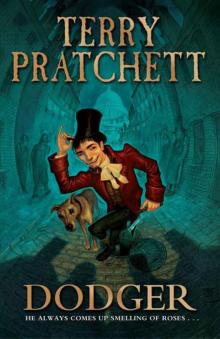 Dodger
Dodger Strata
Strata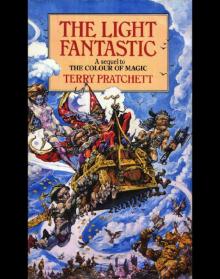 Discworld 02 - The Light Fantastic
Discworld 02 - The Light Fantastic The Folklore of Discworld
The Folklore of Discworld The Science of Discworld
The Science of Discworld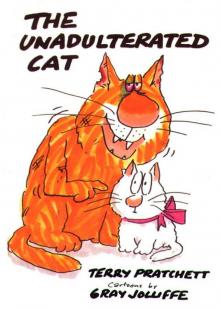 The Unadulterated Cat
The Unadulterated Cat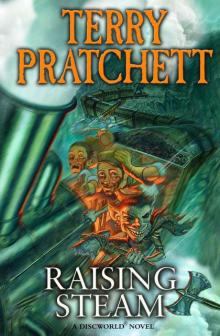 Raising Steam: (Discworld novel 40) (Discworld Novels)
Raising Steam: (Discworld novel 40) (Discworld Novels)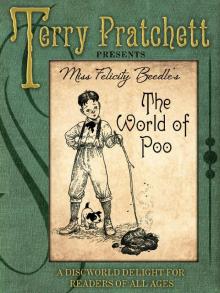 The World of Poo
The World of Poo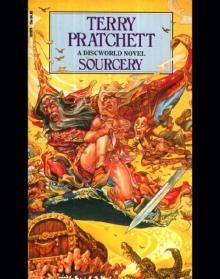 Discworld 05 - Sourcery
Discworld 05 - Sourcery The Witch's Vacuum Cleaner: And Other Stories
The Witch's Vacuum Cleaner: And Other Stories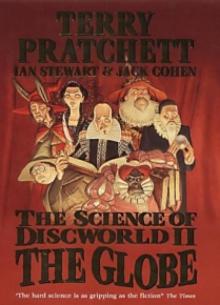 The Science of Discworld II - The Globe tsod-2
The Science of Discworld II - The Globe tsod-2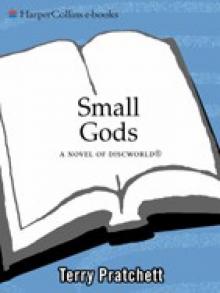 Small Gods: Discworld Novel, A
Small Gods: Discworld Novel, A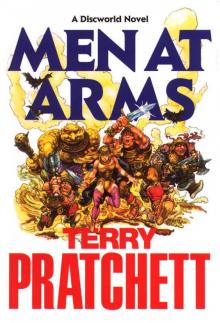 Men at Arms tds-15
Men at Arms tds-15 Tama Princes of Mercury
Tama Princes of Mercury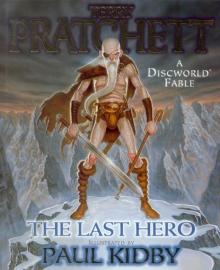 The Last Hero (the discworld series)
The Last Hero (the discworld series) The Long Utopia
The Long Utopia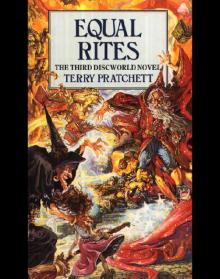 Discworld 03 - Equal Rites
Discworld 03 - Equal Rites Terry Pratchett - The Science of Discworld
Terry Pratchett - The Science of Discworld The Long Earth
The Long Earth The Carpet People
The Carpet People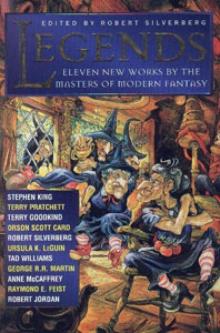 The Sea and Little Fishes (discworld)
The Sea and Little Fishes (discworld)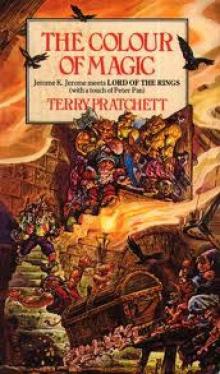 The Colour of Magic
The Colour of Magic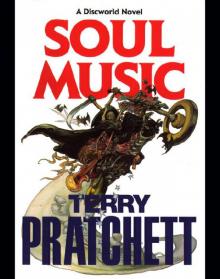 Discworld 16 - Soul Music
Discworld 16 - Soul Music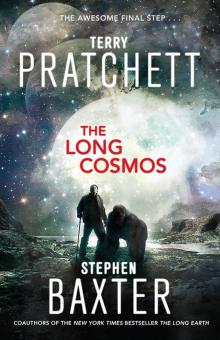 The Long Cosmos
The Long Cosmos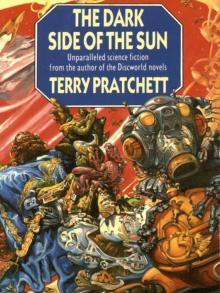 The Dark Side of the Sun
The Dark Side of the Sun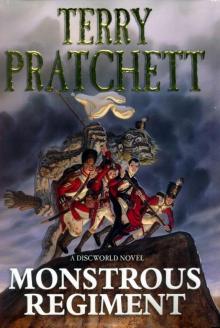 Monstrous Regiment tds-28
Monstrous Regiment tds-28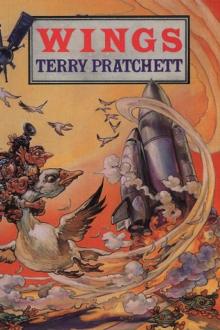 The Bromeliad 3 - Wings
The Bromeliad 3 - Wings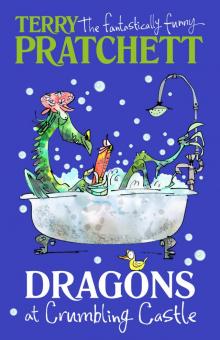 Dragons at Crumbling Castle: And Other Stories
Dragons at Crumbling Castle: And Other Stories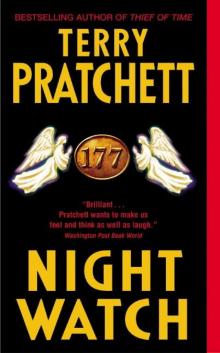 Night Watch tds-27
Night Watch tds-27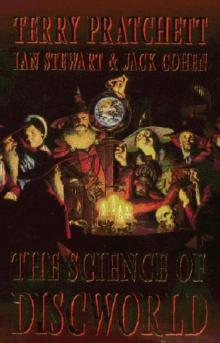 The Science of Discworld I tsod-1
The Science of Discworld I tsod-1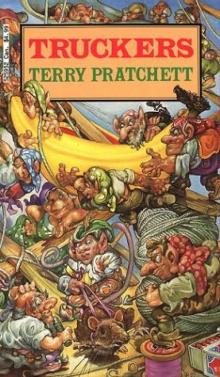 The Bromeliad 1 - Truckers
The Bromeliad 1 - Truckers The Science of Discworld Revised Edition
The Science of Discworld Revised Edition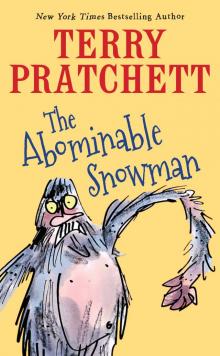 The Abominable Snowman
The Abominable Snowman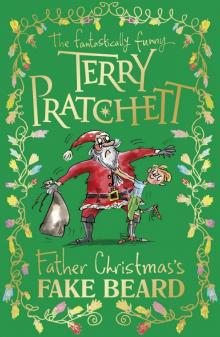 Father Christmas’s Fake Beard
Father Christmas’s Fake Beard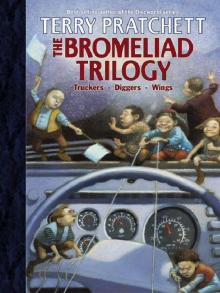 The Bromeliad Trilogy
The Bromeliad Trilogy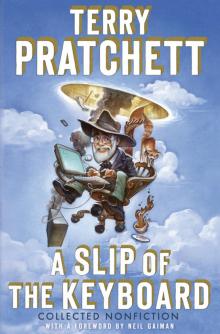 A Slip of the Keyboard
A Slip of the Keyboard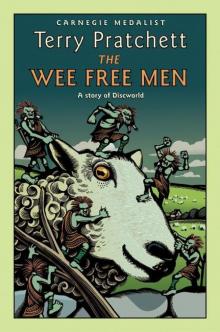 The Wee Free Men d(-2
The Wee Free Men d(-2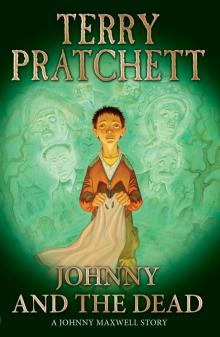 Johnny and the Dead
Johnny and the Dead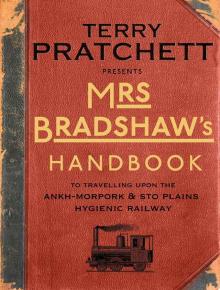 Mrs Bradshaw's Handbook (Discworld Novels)
Mrs Bradshaw's Handbook (Discworld Novels) Truckers
Truckers The Amazing Maurice and His Educated Rodents d(-1
The Amazing Maurice and His Educated Rodents d(-1 Diggers
Diggers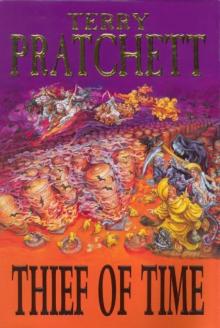 Thief of Time tds-26
Thief of Time tds-26 Science of Discworld III
Science of Discworld III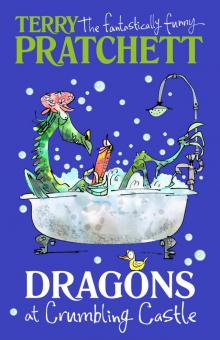 Dragons at Crumbling Castle
Dragons at Crumbling Castle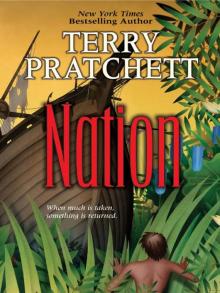 Nation
Nation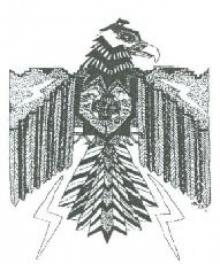 Darwin's Watch
Darwin's Watch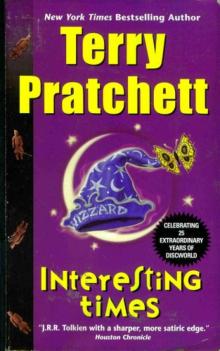 Interesting Times d-17
Interesting Times d-17 The Bromeliad 2 - Diggers
The Bromeliad 2 - Diggers The Science of Discworld II
The Science of Discworld II